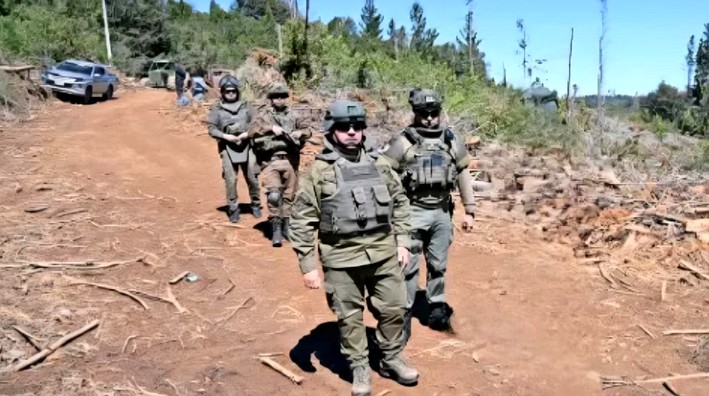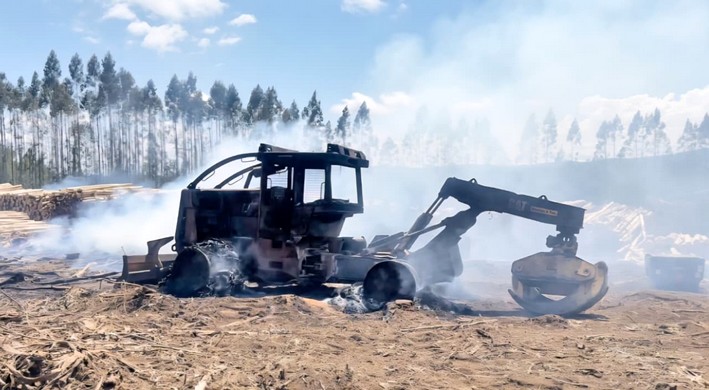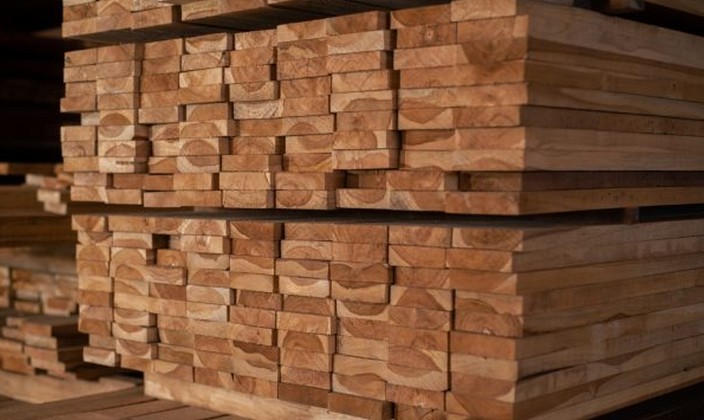The Reality of Insurance Coverage for Trucks and Forestry Machinery
Acts of violence attributed to organized gangs in the south of the country have heavily impacted the insurance industry, which has tightened conditions for selling insurance in the La Araucanía region primarily, restricting coverage and raising premiums on policies protecting vehicles and heavy machinery.
The insurance industry already refers to excluded or "red" zones, and no one connected to the forestry sector is surprised this is happening. According to the Association of Forestry Contractors, in the first half of 2022, 231 pieces of equipment—including trucks, skidders, loaders, and logging towers—have been burned and destroyed.
As a result, some companies now impose coverage restrictions in the La Araucanía and Biobío regions, an "exclusion" zone that extends further south. These restrictions apply to insuring forestry working capital in these areas, though some companies evaluate "case by case" depending on the equipment's "armoring," offering higher limits and deductibles. Typically, the most affected policies are those covering fire, mobile equipment, and vehicles.
Rodrigo Hernández is the manager and founder of RHL Seguros, a company with over 25 years of experience and the first to focus on finding specific solutions for the forestry industry. "In 2001, a group of industry entrepreneurs asked me for coverages that the insurance market had barely developed. They weren’t showcased by any company, nor were they promoted because they were low-demand policies, like civil liability insurance. They didn’t understand the forestry sector and failed to see how much it had evolved toward mechanized operations. They still believed it was an extremely high-risk industry, so I managed to create a product for forestry contractors, initially giving me exclusive sales rights before it evolved into a more mainstream insurance," he recalls.
What can the insurance market offer forestry contractors today, 20 years later?
I’ll speak for us—I don’t know much about other brokerage firms, but we have the experience and connections with international reinsurers specializing in high-risk situations, allowing us to offer solutions for imminent challenges in the forestry sector. For example, people who currently have two or three insured trucks still have coverage for fire attacks, but that’s running out.
I don’t believe any insurance company sells policies covering fire-related losses for fleets or smaller numbers of trucks working in the southern zone due to political risk, a concept that includes sabotage, terrorism, malicious acts, and mob violence.
Political risk today makes insuring a truck fleet unviable, and very few companies—the most experienced ones—take on part of the risk when the fleet is large and premium collection is significant. However, there’s definitely no coverage if mobile equipment operates from Biobío southward—in fact, the river is used as a boundary to assess risk differently. Policies explicitly state that if trucks operate in certain southern towns like Collipulli, Curacautín, Lumaco, Capitán Pastene, Contulmo, Tirúa, Temuco, and others, there’s no coverage. The few more experienced companies, maybe one or two, cover all areas, but if a truck is burned, they’ll only pay 50% of the loss.
This means that if you buy a truck today, averaging $120,000, and it’s burned in the first year—before depreciation—you’ll receive half that value, excluding VAT. So, these policies ultimately pay around $50,000, not accounting for claim evaluation time, machine replacement, or market availability.
Another feature of current insurance in the south is that policies for mobile forestry and agricultural equipment are annual, running from September to September, promoting collective bargaining to improve conditions and rates that companies restricted years ago.
An Unsustainable Situation
For Hernández, this situation is unsustainable and grim for Chile. "International reinsurers know Chile has security and crime issues due to drug trafficking and terrorism. So, it’s a tedious and difficult task to prove that, in this real scenario, solutions are being sought to protect insured assets." He adds, "My constant concern is making forestry insurance sustainable over time because our brokerage has the expertise, whether in transport, harvesting, roads, or infrastructure."
What are the projections for this type of insurance?
Today, our portfolio includes a significant number of forestry clients, so the brokerage must keep this business alive. Through a technology subsidiary, we’ve researched solutions to make forestry attractive to insurers despite existing problems, avoiding total losses that affect assets and ensuring operations continue without relying on replacing equipment after political-risk incidents. A newly tested and certified intra-cab fire suppression system can prevent total loss of trucks and forestry equipment, which we hope will support contractors and fleet owners with better deductibles and premiums.
|
FT Systems’ Fire Suppression System FT Systems is a tech solutions developer that, through a team of Chilean engineers experienced in hotel fire suppression networks, designed a "cabin shower" system that releases water, foam, or dry powder during a fire attack on trucks or forestry equipment. "The Fire Suppression System works and is proven—and its best feature is its cost. A new factory-installed unit costs $10,000, but FT Systems sells it for $1,000 with equal effectiveness. This helps the industry protect insured assets, and policy renewals with the kit installed may lead to lower deductibles and rates," explains Hernández. Since the main damage from burned trucks or machinery is operational downtime, the system minimizes damage and speeds up recovery. A burned machine becomes a minor issue. "Tests show that replacing the seat and some parts gets the equipment running again in about 10 days—no deductible, no month-long wait for evaluation and replacement, which is very limited," says Rodrigo Hernández. |

















